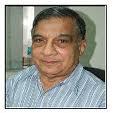RBI gives pleasant surprise

Surprising analysts who were overwhelmed by persistent high inflation and the consequent likely monetary tightening, RBI kept policy rates unchanged in its mid-quarter monetary policy review announced on December 18. Thus, the policy repo rate, reverse repo rate and MSF and bank rate remain at 7.75 per cent, 6.75 per cent and 8.75 per cent, respectively. CRR is also unchanged at 4 per cent of NDTL. Earlier, as a response to escalating inflation, RBI had increased policy rates by 25 bps in September and by a similar measure in October.
The decision on status quo in policy rates is a close one as current inflation is too high. RBI says that it would like to wait for more data to reduce uncertainty surrounding the short-term path of inflation. Also, given the weak state of the economy, it would not like to take an overly reactive policy action. Nevertheless, the apex bank assures that it will act, including on off-policy dates if warranted, so that inflation expectations stabilise and an environment conducive to sustainable growth takes hold.
Policy stance
Even as headline inflation, both at retail and wholesale levels has increased, there are indications that vegetable prices may be turning down sharply and disinflationary impact of recent exchange rate stability should play out into prices. The negative output gap as well as the lagged effects of effective monetary tightening since July should also help contain inflation. Yet, there are risks including the possibility that tapering of quantitative easing by the US Fed may disrupt external markets. The apex bank says that it would be vigilant and act quickly and appropriately if the expected softening of food inflation does not materialise, or if inflation excluding food and fuel does not show a fall in next data releases.
Economic background
The outlook for global growth continues to remain moderate, with an uneven recovery across industrial countries. While volatility in financial markets has receded, it could pick up again following the inevitable taper of quantitative easing in the US, given the large dependence of EMEs on external financing.
In India, the pick-up in real GDP growth in Q2, albeit modest, was driven largely by robust growth of agricultural activity, supported by an improvement in net exports. However, the weakness in industrial activity persisting into Q3, still lacklustre lead indicators of services and subdued domestic consumption demand suggest continuing headwinds to growth. Tightening government spending in Q4 to meet budget projections will add to these headwinds. In this context, the revival of stalled investment, especially in the projects cleared by the Cabinet Committee on Investment, will be critical.
The narrowing of the trade deficit since June through November, on positive export growth and contraction in both oil and non-oil imports, should bring the current account deficit (CAD) down to a more sustainable level for the year as a whole.
High inflation at both wholesale and retail levels risks entrenching inflation expectations at unacceptably elevated levels, posing a threat to growth and financial stability. There are also signs of a resumption of high rural wage growth, suggesting second round effects that cannot be ignored. High and persistent inflation also increases the risks of exchange rate instability.









